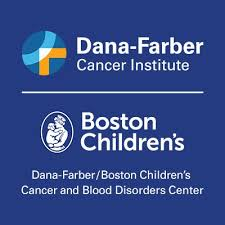

Dr. Kathy Warren is a unique and caring woman who is committed to her work in finding a cure for DIPG. She has a special relationship with the Cristian Rivera Foundation having been awarded the 2019 Vision of Hope Award at last year’s gala for all her efforts. She currently works as the clinical director of pediatric neuro-oncology at the Dana Farber Institute, where she has her own innovative research lab and team. Prior to her job at Dana Farber, Dr. Warren spent twenty-five years at the National Cancer Institute but changed jobs so she could focus more on pediatric cancer treatment. Dr. Warren never planned on studying medicine and actually earned a degree as a medical technician during her undergraduate education. She decided to go back to medical school to specialize in diffuse gliomas after meeting an inspiring DIPG patient during her medical tech rotations and learning that there was little treatment to offer children with brain tumors. Dr. Warren is truly an inspiration and CRF hopes to donate some of our money raised towards her research.
Dr. Warren loves her job and feels that her experience in the medical field has been incredibly rewarding. She spoke fondly about the meaningful patient-physician bond she formed with the children she treated while working at the National Cancer Institute. This left little time for her to make progress with her research for DIPG, so she began working at the Dana Farber Institute. As the clinical director, she felt she could make more of an impact by focusing her energy on clinical trials and research necessary for curing DIPG.
As many of you know, DIPG is not a discrete mass but instead spreads out between normal brain cells. Dr. Warren compared DIPG to sprinkling sand on a lawn and trying to pick up all the grains, which makes it incredibly difficult to treat. Since DIPG is located in the brainstem, crucial communication between the brain and the rest of the body is obstructed, affecting normal bodily functions like breathing and movement. After a child is diagnosed, standard treatment involves radiation therapy over the course of about six weeks. Children are also given steroids to supplement the radiation and treat common symptoms such as nausea, headaches, and blurred vision. The effects of radiation therapy can be good, but treatments to prevent the growth of the tumor have still not been developed, so most children end up passing away about nine months after diagnosis.

Although there is still no cure for DIPG, Dr. Warren says that significant progress has been made in the past ten years. Since its discovery in the 1960s when Neil Armstrong’s daughter was diagnosed, scientists have been able to differentiate DIPG from other brainstem tumors. They have also discovered more about the biology of the tumor and have created targeted dosing for drugs. The number of active clinical trials has notably increased, although they usually occur in waves. However, the mere existence of these clinical trials has allowed many DIPG-specific drugs to be tested. Dr. Warren explained that most trials are either in stage 1, where the drug is being tested for safety and side effects, or stage 2, where they determine whether the drug is effective against DIPG. Stage 3 clinical trials, which involve comparing the drug to the current standard of care, are rare right now. Each clinical trial usually has three open slots at a time, and the drug is tested on those three patients before they allow for more. Dr. Warren says that it can be frustrating when waiting for a slot to open up, especially for the children that are cleared and ready for treatment. Regardless, she is still optimistic that progress towards a cure will be made in due time.
Dr. Warren is incredibly grateful for nonprofit foundations like the Cristian Rivera Foundation that continuously work to raise money for this cause. She says that her research team relies heavily on money from smaller private foundations especially because government-funded pediatric cancer research is rare. The sad reality is that the government will prioritize more common forms of cancer such as lung cancer because they know it is the most beneficial. However, children with cancer often suffer at the hands of these decisions because nobody really prioritizes them. Although there is a lot of progress that is yet to be made with DIPG, Dr. Warren is hopeful that a cure is within reach and plans to work tirelessly to reach this goal.
By Ranjani Anirudhan



